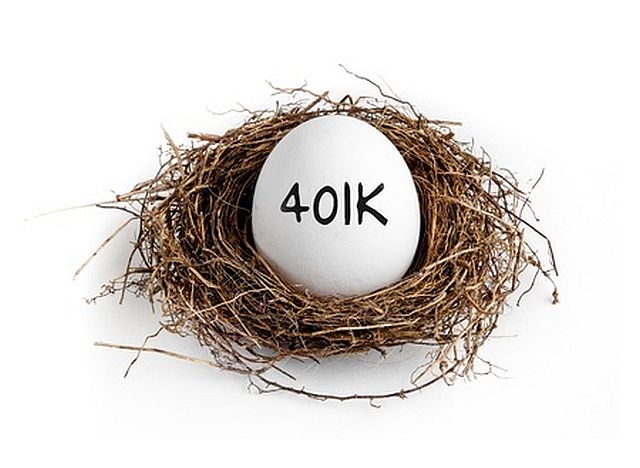Tag 401k
Your 401k contribution limits for 2025. Empower your wealth.

401k contribution limits for 2025 are $23,500 per person, up from 23,000 in 2024. All 401k participants over 50 can make a catch-up contribution of $7,500, for a total of $31,000. Starting in 2025, 401k participants who are reaching the…
Make These Smart Moves In Your 401k In 2024

Smart 401k moves to make in 2024 to grow your retirement savings. Do you have a 401k? These six 401k moves will help you grow your retirement savings and ensure that you take full advantage of your 401k benefits. A…
8 reasons to open a solo 401k plan

Updated for 2024 What is a solo 401k plan? The solo 401k plan is a powerful tool for entrepreneurs to save money for retirement and reduce their current tax bill. These plans are often ignored and overshadowed by the more…
401k contribution limits 2024

401k contribution limits for 2024 are $23,000 per person, up from 22,500 in 2023. All 401k participants over the age of 50 can make a catch-up contribution of $7,500, for a total of $30,500 What is 401k? 401k is a…
Last minute 401k moves to make in 2023

Last minute 401k moves to make in 2023 to boost your retirement savings. Do you have a 401k? These six 401k moves will help you grow your retirement savings and ensure that you take full advantage of your 401k benefits.…
Tax Saving Moves for 2023

1. Know your tax bracket The first step in managing your taxes is knowing your tax bracket. 2023 federal tax rates fall into the following brackets depending on your taxable income and filing status. Knowing where you land on the…
401k contribution limits 2023

401k contribution limits for 2023 are $22,500 per person, up from 20,500 in 2022. All 401k participants over the age of 50 can make a catch-up contribution of $7,500, for a total of $30,000 What is 401k? 401k is a…
Charitable donations: 6 Tax Strategies – Updated for 2022

Charitable donations are an excellent way to help your favorite cause, church, foundation, school, or other registered charitable institution of your choice. Americans made $484.85 billion in charitable donations in 2021, which was 4% higher than 2020. The average annual…
Tax Saving Strategies for 2022

As we approach the end of 2022, I am sharing my favorite list of tax-saving ideas to help you lower your tax bill for 2022. In my experience, the US tax rules change frequently. 2022 was no exception. 2022 has…
Wise 401k moves to make in 2022

Six wise 401k moves to make in 2022 to boost your retirement saving. Do you have a 401k? These five 401k moves will help you grow your retirement savings and ensure that you take full advantage of your 401k benefits.…
Maximizing Roth savings for high-income earners

Maximizing your Roth savings is a terrific way to save for retirement for both high-income earners and professionals at all levels. Roth IRA is a tax-free retirement savings account that allows you to make after-tax contributions to save towards retirement.…
401k contribution limits 2022

401k contribution limits for 2022 are $20,500 per person. All 401k participants over the age of 50 can add a catch-up contribution of $6,500. What is 401k? 401k plan is a workplace retirement plan where both employees and employers can…
5 smart 401k moves to make in 2021

5 smart 401k moves to make in 2021 to boost your retirement saving. Do you have a 401k? These five 401k moves will help you grow your retirement savings and ensure that you take full advantage of your 401k benefits.…
Tax Saving Ideas for 2021

As we approach the end of 2021, I am sharing my favorite list of tax-saving ideas that can help you lower your tax bill for 2021. In my practice, In the US tax rules change frequently. 2021 was no exception.…
401k contribution limits 2021

401k contribution limits for 2021 are $19,500 per person. All 401k participants over the age of 50 can add a catch-up contribution of $6,500. What is 401k? 401k plan is a workplace retirement plan where both employees and employers can…
Tax Saving Moves for 2020

As we approach the end year, we share our list of tax-saving moves for 2020. 2020 has been a challenging and eventful year. The global coronavirus outbreak changed the course of modern history. The Pandemic affected many families and small…
5 smart 401k moves to make in 2020

5 smart 401k moves to make in 2020. Do you have a 401k? These five 401k moves will help you empower your retirement savings and ensure that you take full advantage of your 401k benefits. 2020 has been a challenging…
401k contribution limits 2020

401k contribution limits for 2020 are $19,500 per person. All 401k participants over the age of 50 can add a catch-up contribution of $6,500. What is 401k? 401k plan is a workplace retirement plan where both employees and employers can…
Preparing for retirement during coronavirus

Are you preparing for retirement during the coronavirus crisis? Many professionals who are planning to retire in 2020 and beyond are facing unique challenges and circumstances. Probably your investment portfolio took a hit in February and March. Maybe your job…
12 End of Year Tax Saving Tips

As we approach the close of 2019, we share our list of 12 end of year tax saving tips. Now is a great time to review your finances. You can make several smart and simple tax moves that can help…
Contact Us

